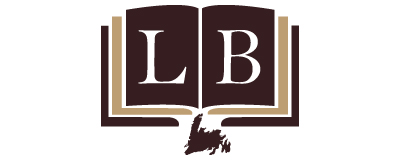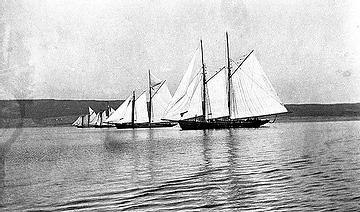 The town of Little Bay was on the map in 1879 with a population recently swollen and suddenly lucrative. “Adolph Guzman developed [Peyton’s and Sterling orebodies] during much of 1879, removing hundreds of tons of ore from the locale to the Little Bay smelters” (Martin).
The town of Little Bay was on the map in 1879 with a population recently swollen and suddenly lucrative. “Adolph Guzman developed [Peyton’s and Sterling orebodies] during much of 1879, removing hundreds of tons of ore from the locale to the Little Bay smelters” (Martin).
Many of the early players in the town were of German origin and Baron Franz von Ellershausen treated the design of the town and mine together as a social project. Ellershausen was already known in Nova Scotia where he had built houses for 32 shipwrecked German families. His mansion there, known as Ellershausen Manor, can still be found today in the namesake community of Ellershouse.
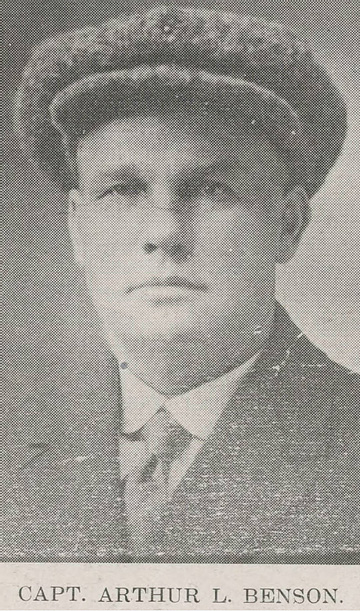 Little Bay’s labour boom continued through 1879 and attracted many Newfoundland families. They arrived with kin jam-packed aboard schooners. The harbour was bustling with boats and the hills were busied with quickly built houses. Family names here in 1879 include Conway, Colbourne, Dove, Simms, Brown, Wiseman, Darling, Bennett, Parsons, and Reed. The Supreme Court documents note a resident named Benjamin Parsons who owed $282.37 for goods. The Benson family also arrived this year, their son Arthur would become a well-known master mariner (Who’s Who). Many names which would remain in the area are likely here by 1879 and examples include; the Dobbins from St. Mary’s, the Boydes’ from Tizzard’s Harbour, the Warrens’ from Gray Island, and the Heads’ from Fogo.
Little Bay’s labour boom continued through 1879 and attracted many Newfoundland families. They arrived with kin jam-packed aboard schooners. The harbour was bustling with boats and the hills were busied with quickly built houses. Family names here in 1879 include Conway, Colbourne, Dove, Simms, Brown, Wiseman, Darling, Bennett, Parsons, and Reed. The Supreme Court documents note a resident named Benjamin Parsons who owed $282.37 for goods. The Benson family also arrived this year, their son Arthur would become a well-known master mariner (Who’s Who). Many names which would remain in the area are likely here by 1879 and examples include; the Dobbins from St. Mary’s, the Boydes’ from Tizzard’s Harbour, the Warrens’ from Gray Island, and the Heads’ from Fogo.
By April the births, weddings, and events of the town started to be covered by the island’s newspapers. A serious fire that damaged two houses in July was covered by both the Harbour Grace Standard and The Evening Telegram. Little Bay voted against “the French shore” question this year (Journal of the House of Assembly, P. 709). But there would be run-ins with the French – so don’t worry, that’s coming! The government assigned Way Officers to the town in 1879 in an attempt to maintain order over the population of 1500 and talks began about shipping produce directly from Nova Scotia to better supply the boom (Journal of the House of Assembly, P. 623, 674).
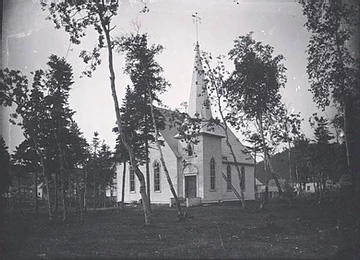 A decline in lumber prices saw the Presbyterian population leave the Bay of Islands for Little Bay and subsequently Reverend Archibald Gunn was appointed to the area and started his church on March 12th, 1879. This was the first church built and “all denominations in the community attended the Presbyterian services” Rev. Gunn stated. He further said, perhaps ironically, that “the spirit of bigotry is almost gone. All denominations attended our service…. Our Church is better adapted for mission work in these districts than any of the other Evangelical Churches” (Moncrieff). Baron von Ellershausen, the mastermind behind the town, had requested Rev. Gunn and the town’s Presbyterian leadership greatly aided the early success of the church.
A decline in lumber prices saw the Presbyterian population leave the Bay of Islands for Little Bay and subsequently Reverend Archibald Gunn was appointed to the area and started his church on March 12th, 1879. This was the first church built and “all denominations in the community attended the Presbyterian services” Rev. Gunn stated. He further said, perhaps ironically, that “the spirit of bigotry is almost gone. All denominations attended our service…. Our Church is better adapted for mission work in these districts than any of the other Evangelical Churches” (Moncrieff). Baron von Ellershausen, the mastermind behind the town, had requested Rev. Gunn and the town’s Presbyterian leadership greatly aided the early success of the church.
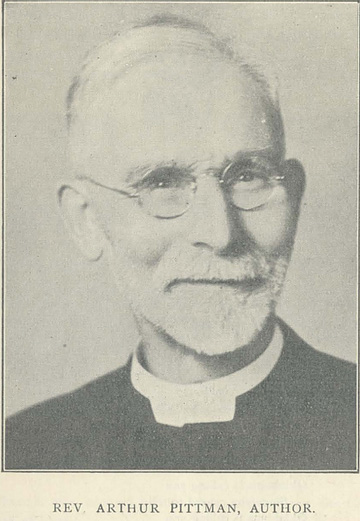 The success of Little Bay can be credited to its early planners. This led to the town’s use as evidence for the Geological Survey and following it they would leave no stone unturned in the cross-island hunt for the next big mineral find (Journal of the House of Assembly, P. 587). About this time, a world-traveling Scotsmen from Nova Scotia by the name of John Robert Stewart arrived on the island and he was set to leave a mark on this mining community. Meanwhile, the Rev. Arthur Pittman was starting to discover why the area had been known as Indian Bight as residents began uncovering Beothuk artifacts while farming the land. Rev. Pittman collected these objects and mailed them by steamer to The Royal British Museum where they reside still.
The success of Little Bay can be credited to its early planners. This led to the town’s use as evidence for the Geological Survey and following it they would leave no stone unturned in the cross-island hunt for the next big mineral find (Journal of the House of Assembly, P. 587). About this time, a world-traveling Scotsmen from Nova Scotia by the name of John Robert Stewart arrived on the island and he was set to leave a mark on this mining community. Meanwhile, the Rev. Arthur Pittman was starting to discover why the area had been known as Indian Bight as residents began uncovering Beothuk artifacts while farming the land. Rev. Pittman collected these objects and mailed them by steamer to The Royal British Museum where they reside still.
Sources:
Martin, Wendy “Once Upon a Mine” 1983
Moncrieff, Wilfred M. “A History of the Presbyterian Church in Newfoundland 1842-1967” 1966
“Who’s Who in and from Newfoundland” 1930
“Journal of the House of Assembly” 1879
“Harbour Grace Standard” 1879
“Evening Telegram” 1879
Residents:
* Baron Franz von Ellershausen – mine management (Martin)
* Adolf Guzman – mine management (Martin)
* Rev. Arthur Pittman – Church of England (Moncrieff)
* Rev. Stephen O’Flynn – Catholic Church (Moncrieff)
* Rev. Archibald Gunn – Presbyterian Church (Moncrieff)
* Dr. Stafford – town surgeon (Twillingate Sun, Sept 1882)
* The Benson family – merchants (Who’s Who)
* The Head family – miners (Atlantic Guardian, Sept 1948)
* The Bouzane family – tree cutters (Deck’s Awash, Vol. 17 No.5)
* Benjamin Parsons (Supreme Court documents)
* Birth of Francis John Dove to David (mine carpenter) and Frances Amanda Freeman (Canada Births and Baptisms, 1661-1959)
* Birth of Minnie White – maiden name unknown (1921 census)
* Birth of Elizabeth Horney – maiden name unknown (1921 census)
* Birth of Easter Moores – maiden name unknown (1921 census)
* Birth of Mary J Purchase – maiden name unknown (1921 census)
* Birth of Henry T Colbourne – mother Selina (1921 census)
* Birth of Francis J Dove (1921 census)
* Birth of Thomas Conway (1921 census)
* Birth of Ophelia Coffin – maiden name unknown (1945 census)
* Birth of Archibald William Simms to Alfred and Caroline (Vital Stats, 1753-1893)
* Birth of Emeline Brown to George and Selina (Vital Stats, 1753-1893)
* Birth of Selina Wiseman to Isaac and Maria (Vital Stats, 1753-1893)
* Birth of Scelia Darling to James William and Louisa (Vital Stats, 1753-1893)
* Birth of Emma Jane Bennett to James and Elizabeth (Vital Stats, 1753-1893)
* Birth of Isabella Laura Parsons to Ducan and Ann Eliza (Vital Stats, 1753-1893)
* Birth of William Edward Taylor to George and Ester Sarah (Vital Stats, 1753-1893)
* Birth of William J. Reed to Moses and Sarah (Canada Marriages 1661-1949)
* Birth of Abel Saunders (Canada Passenger Lists, 1881-1922)
